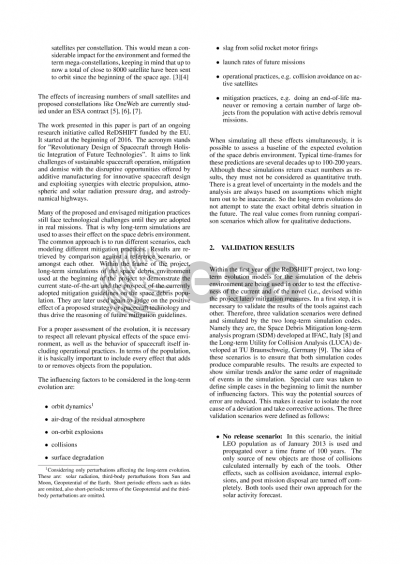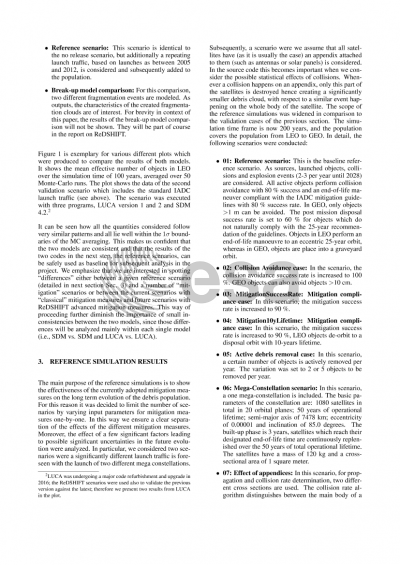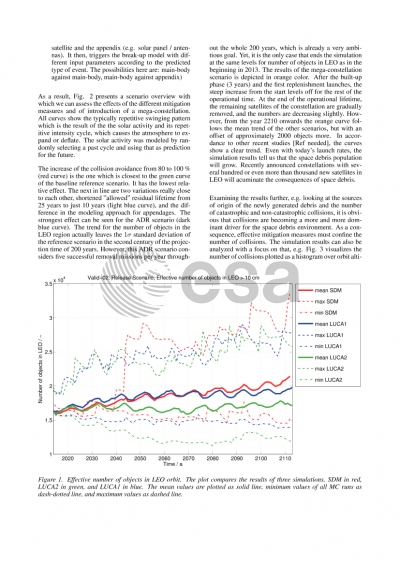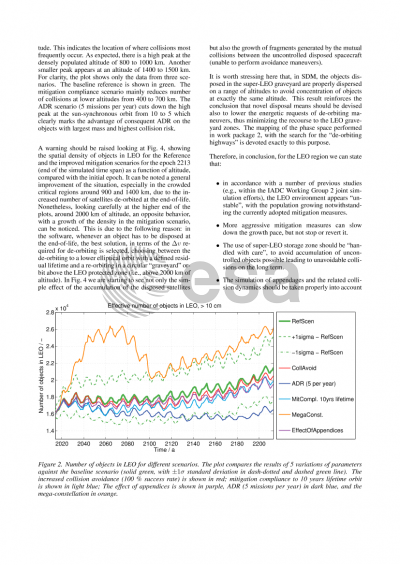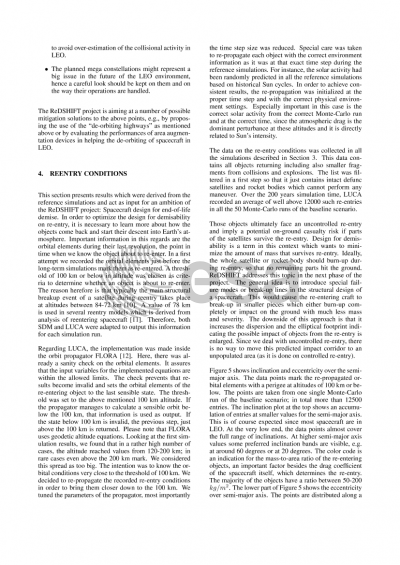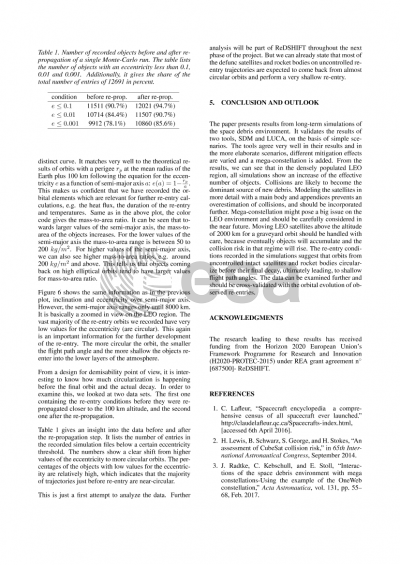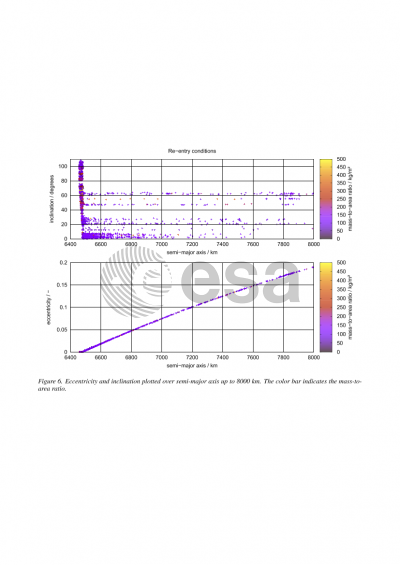Document details

Abstract
Long-term simulations of the space debris environment show an increase in the number of debris objects in low Earth orbit region. Over the next one hundred years, fragments from collisions and/or explosions are expected to become the dominant part of the debris population.
Many of the proposed and envisaged mitigation practices still face technological challenges until they are adopted in real missions. That is why long-term simulations are used to asses their effect on the space debris environment. The common approach is to run different scenarios, each modeling different mitigation practices. Results are retrieved by comparison against a reference scenario, or amongst each other.
Remediation measures for space debris can be generally divided into two categories: active and passive. Both are taken into account in the simulations, but the focus of this study is to drive the reasoning for the development of passive means.
Starting with a critical analysis of the space debris environment and the prospect of mitigation, the paper will present the results of validation scenarios between two simulation codes. Namely they are, the Space Debris Mitigation long-term analysis program (SDM) developed at IFAC, Italy, and the Long-term Utility for Collision Analysis (LUCA) developed at TU Braunschweig, Germany. The validation scenarios are kept simple in terms of the effects modeled in order to judge on the basic basic behaviour of both codes. The first scenario is a no-release case which does not consider the launch of any new spacecraft. Thus, the only source of new objects for the space debris population are collisons which are calculated by both tools. The second case is similar to the first one, but uses a repeating launch traffic from the past eight years to add new objects to the population. As a special case, the break-up models are examined separately with single fragmentation events. The comparison results show a high level of conformance between the two tools.
The third part of the paper presents a set of scenarios for the evolution of the debris population from LEO to GEO with the aim to single out and highlight the driving factors of the future environment evolution. As a baseline, the simulations consider a launch traffic and an explosion rate derived from the past several years. Furthermore, the specific scenarios take into account the following effects: Spacecraft are performing collision avoidance; the current mitigation guidelines are respected, at different levels of compliance ; active debris removal missions are conducted; a mega-constellation is introduced; and the effect of appendices (i.e. using different cross-sections for propagation than for collision rate determination) is considered. Furthermore, this section gives an evaluation of the last state of an object about to re-enter Earth's atmosphere. The according orbital elements are recorded during the simulations and the information is then used for characterizing re-entry conditions. It serves as input for the design for demise approach, which aims to define predetermined breaking points in the structure of spacecraft and thus, limits the risk of space debris surviving re-entry.
Preview

